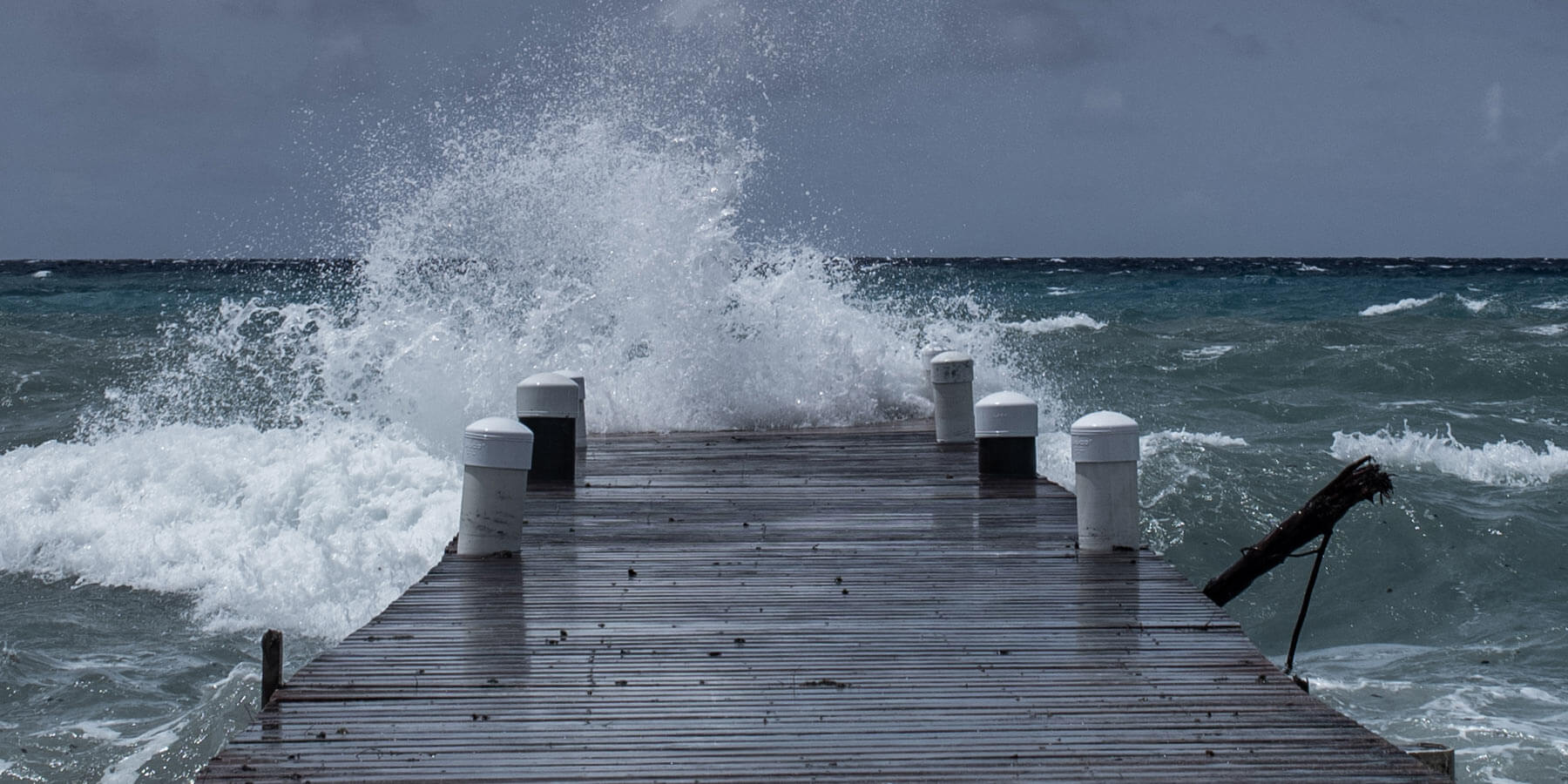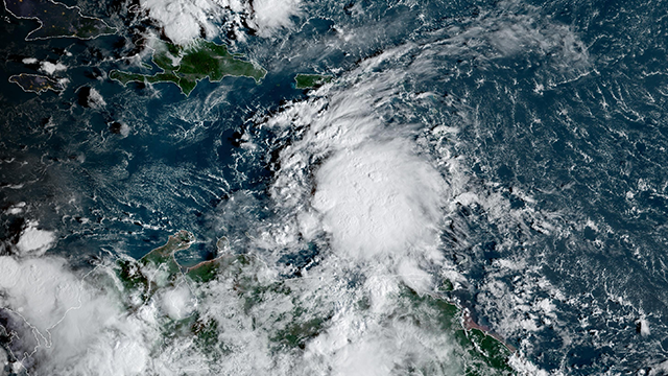Tropical Storm Melissa has become the latest system to stir the Caribbean, capturing the attention of meteorologists and residents alike. Originating from a tropical disturbance known as Invest 98L, the storm rapidly organised into a named system over the warm waters of the Caribbean Sea. With rising sea temperatures and favourable wind conditions, Tropical Storm Melissa has strengthened quickly, prompting weather alerts and warnings across the region.
The development of Tropical Storm Melissa signals the height of the late-season tropical activity that often surprises forecasters. As global weather patterns shift, storms like Melissa are forming more frequently and moving unpredictably. This storm, in particular, has drawn interest due to its potential to impact the Caribbean and influence the broader weather systems extending towards the United Kingdom.
What is Tropical Storm Melissa and How It Formed
Tropical Storm Melissa is a rotating low-pressure system that forms over warm tropical waters, fuelled by heat and moisture. When wind speeds reach 39 miles per hour, it qualifies as a tropical storm. Melissa reached this threshold swiftly, with satellite imagery showing a well-defined centre and organised cloud patterns typical of developing tropical systems.
Meteorologists attribute Melissa’s rapid formation to abnormally warm Caribbean waters combined with low wind shear. These conditions allowed the storm to strengthen steadily without disruption. Such rapid intensification has become increasingly common in recent years, sparking discussions among scientists about the role of climate change in shaping storm development.
The Path and Forecast of Tropical Storm Melissa
According to the National Hurricane Center (NHC), Tropical Storm Melissa is currently moving west-northwest across the Caribbean Sea. Forecast models predict that it could continue to strengthen over the next few days, potentially reaching hurricane status if sea temperatures remain high. Melissa’s projected path suggests heavy rainfall and strong winds for parts of the Greater Antilles, including Jamaica, Cuba, and the Cayman Islands.
However, the future of Tropical Storm Melissa remains uncertain, as steering currents may cause a turn towards the north later this week. Spaghetti models reveal a variety of possible tracks, including a potential route into the Atlantic. Regardless of its exact path, forecasters warn that Melissa’s presence could result in flash flooding, dangerous surf conditions, and widespread travel disruptions across the Caribbean.
Effects of Tropical Storm Melissa on the Caribbean

The Caribbean is bracing for the full impact of Tropical Storm Melissa, with intense rainfall and powerful winds expected across several islands. Meteorological offices have issued advisories warning of potential flash floods and landslides in mountainous regions. Coastal areas are also preparing for storm surges and rough seas, which could disrupt marine operations and local transport.
In addition to physical damage, Tropical Storm Melissa poses economic challenges for Caribbean nations reliant on tourism and agriculture. Airports and ports are closely monitoring conditions, with flight delays and cancellations likely as the storm progresses. For many islanders, Melissa is another reminder of the importance of preparation and resilience during the unpredictable hurricane season.
The UK Weather Impact: Could Melissa Influence British Skies?
While Tropical Storm Melissa is not expected to reach the United Kingdom directly, its remnants could still affect UK weather patterns. Meteorologists from the Met Office note that storms like Melissa can alter the position of the jet stream, pulling moist air northwards and increasing rainfall across parts of Britain. Such shifts often lead to unsettled autumn weather with strong winds and lower temperatures.
The connection between tropical systems and UK weather has been observed before, with past storms contributing to heavy rainfall events weeks after forming in the Atlantic. Tropical Storm Melissa could bring similar effects, increasing the likelihood of wetter conditions and stormier skies. For British residents, staying informed about these indirect influences helps anticipate changes in local weather patterns.
Comparing Tropical Storm Melissa to Past Storms
This is not the first time a storm named Melissa has appeared on meteorological maps. Previous systems bearing the same name, including those in 2007, 2013, and 2019, were relatively short-lived and less impactful. However, the current Tropical Storm Melissa seems poised to differ, showing greater organisation and the potential to become a more significant weather event.
Modern forecasting tools, including advanced satellites and computer models, have provided valuable insights into how storms like Melissa evolve. By comparing current data with past occurrences, scientists can refine their predictions, helping communities prepare more effectively. Melissa serves as both a warning and a learning opportunity for future tropical storm monitoring.
Climate Change and the Growing Strength of Storms
The rise of storms like Tropical Storm Melissa underscores the growing influence of climate change on global weather. Warmer ocean waters act as fuel for these systems, enabling them to form more quickly and sustain higher wind speeds. Scientists warn that this pattern may continue, leading to more frequent and intense storms in the years ahead.
In the case of Tropical Storm Melissa, higher-than-average sea temperatures in the Caribbean played a critical role in its development. As global temperatures rise, storms are not only becoming stronger but also extending further north, threatening regions that were previously considered safe. This trend highlights the urgent need for stronger climate resilience strategies worldwide.
Safety and Preparedness During Tropical Storm Melissa
Authorities in the Caribbean have urged residents to stay alert and follow official weather updates as Tropical Storm Melissa moves through the region. Emergency response teams are preparing for potential flooding and power outages, while local governments emphasise the importance of early evacuation plans where necessary. Staying informed through trusted sources like the NHC and Met Office remains essential.
Travellers are also advised to check airline schedules and remain flexible, as Tropical Storm Melissa could disrupt travel routes. For those living in storm-prone areas, basic preparation—such as securing loose outdoor items, stocking emergency supplies, and having a communication plan—can make a critical difference in ensuring safety during severe weather.
Conclusion: Monitoring the Path of Tropical Storm Melissa
Tropical Storm Melissa continues to evolve, its future uncertain but its presence undeniable. From its origins in the Caribbean to its potential ripple effects in the UK, Melissa demonstrates the interconnected nature of global weather systems. As forecasts unfold, staying informed and prepared remains the key to navigating the storm’s unpredictable course.
While Melissa’s impact may vary across regions, it reinforces the importance of climate awareness and preparedness in the modern world. Whether it strengthens into a hurricane or weakens over open waters, Tropical Storm Melissa is a reminder of nature’s power and the growing need for proactive weather monitoring.
FAQs about Tropical Storm Melissa
What is Tropical Storm Melissa?
Tropical Storm Melissa is a developing weather system that formed in the Caribbean Sea, producing strong winds and heavy rainfall.
Could Tropical Storm Melissa become a hurricane?
Meteorologists indicate that the storm may strengthen into a hurricane if sea temperatures and atmospheric conditions remain favourable.
Will Tropical Storm Melissa affect the UK?
While the storm won’t make landfall in the UK, its remnants may influence British weather by causing wetter and windier conditions.
Why do storms have names like Melissa?
The World Meteorological Organization assigns names to tropical storms to simplify communication and help track systems more easily.
What precautions should people take during Tropical Storm Melissa?
Residents in affected areas should follow local advisories, prepare emergency supplies, and stay indoors during severe weather conditions.
You may also read: Amazon Internet Outages: How the AWS Crash Shook the UK and the World


